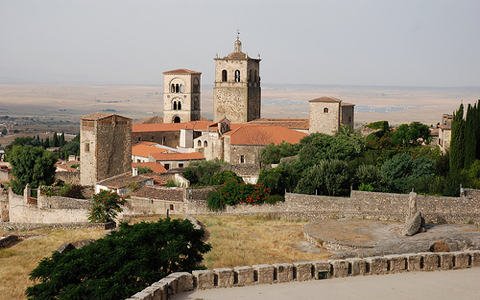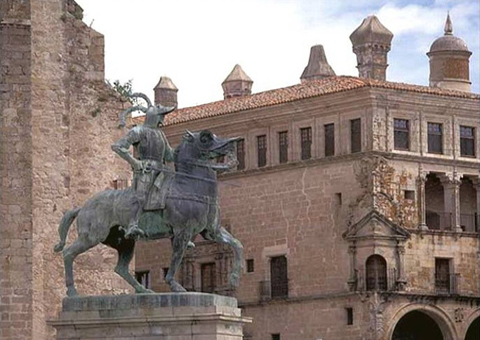
Located in the province of Cáceres , Trujillo is known mainly for being the city of birth of the conqueror Francisco Pizarro . Its rich heritage also gives it the status of a tourist center in Extremadura , like its neighbor Mérida or the capital Cáceres itself. Its origin dates back to a Roman settlement on an indigenous village located on a hill and which they put the name of Turgalium . With the Arab invasion, in the 8th century, it became Torgelo until the Christian reconquest in 1232.
Among the most remarkable places that can be visited, we find the Church of San Martín, Church of Santiago, Pizarro’s House Museum, Museum of Costume, Arab Castle, Museum of cheese and wine, the Plaza Mayor, the palace of the Marquis of the Conquest, the Chaves palace or the walled enclosure, among a long etc.
Places of interest
The Arab Castle , currently in a very good state of preservation, dates from the 9th century and the different styles of its historical evolution can be recognized. It is a square enclosure with towers at the corners, whose access door is flanked by large towers. In the west area there are two albarrana towers (of Arab origin) that are joined to the building through a drawbridge.
The House-museum of Pizarro , consists of two floors in which aspects related to the life of the conqueror are recreated and exposed. The lower floor has been dedicated to reproducing a Trujillo home from the 15th century, and on the upper floor the work of Pizarro is exhibited.
Fabulous collections created by twentieth-century designers are exhibited in the Museo del Traje , and you can see beautiful costumes that once used to dress characters from the world aristocracy, artists or people from Extremadura society. Monographic collections that recreate previous eras are shown periodically.
The beautiful Plaza Mayor is surrounded by arcades, where the Church of San Martín is located, with a Gothic ashlar nave and an 18th century organ.
Spectacular is, without a doubt, the magnificent Baroque façade and the corner balcony of the Palace of the Dukes of San Carlos .
The Palacio de Piedras Albas , built in the 16th century , is distinguished from other buildings by its arcaded gallery of Florentine influence and its less sumptuous style. It is also famous for its corner balcony, its huge shield and its wrought iron bars.

The Church of Santa María la Mayor was originally an Arab and Visigothic mosque.
The Coria Convent, dating from the 15th century, currently houses the headquarters of the Xavier de Salas foundation. The purpose of the foundation is the study and dissemination of relations between Extremadura and America throughout history.
The primitive temple of the Church of Santiago was built by the Military Order of Santiago.
La Alberca was originally a Roman bath and later some Arab baths.
Gastronomy
Extremadura culinary art is characterized by simplicity and naturalness , straight from the land. Pork, lamb, kid, country chicken, rabbit or hare are its most representative meats, seasoned with garlic, onion, parsley, bay leaf, rosemary, tomato and olive oil. With regard to vegetables, either as a complement or in the form of stews, the most typical are chard, wild asparagus, cardillos, ground criadilla and white truffle.
